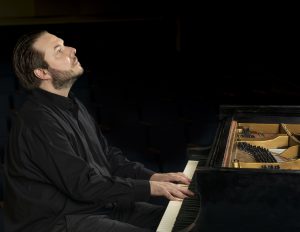
By Márcio Bezerra
Palm Beach Symphony ended its 50th anniversary season April 25 with an ambitious all-Beethoven program at the Kravis Center.
Under the direction of Gerard Schwarz, the group started the evening with an early work, the Piano Concerto No. 2 (in B-flat major, Op. 19). This sunny concerto (actually the first the composer wrote, despite its misleading number) was performed with sensitivity and impressive clarity by pianist Ignat Solzhenitsyn.
Throughout the three movements, his judicious use of pedal was very much in style with the early work. He negotiated the fast runs in the first movement with ease and gave a convincing rendition of the famous cadenza. Perhaps because he is also a celebrated conductor, his playing was precisely coordinated with the orchestra, which fulfilled its accompaniment duties with finesse.
His cantabile playing in the second movement was particularly touching, and he played the last measures of it in a most convincing declamatory way. He obliged the standing ovation with a spirited rendition of Beethoven’s Bagatelle in C minor (WoO 52), another gem the composer wrote but did not care to publish.
The second part brought four soloists and four choral ensembles from the University of Miami’s Frost School of Music to the stage for the composer’s Symphony No. 9 (in D minor, Op. 125). The Choral Symphony has become an anthem of freedom and joy ever since Leonard Bernstein performed in Berlin on Christmas 1989 in a concert celebrating the fall of the infamous Wall. It certainly reflects Beethoven’s political idealism, while being also the musical summit of his symphonic output.
It is a long, technically demanding work for the orchestra and has some awkward ensemble writing for the soloists that demand singers on top of their game. The performance at Dreyfoos Hall had many moments of beauty, but mostly thanks to Beethoven’s genius, not because of the quality of the playing. Throughout the first three movements, there were some major problems with tuning, ensemble playing, and whole sections missing cues. The fact that the audience applauded between each movement did not help.
Of the four soloists, only the mezzo-soprano, Robynne Redmon, had extensive performance experience, which may explain why the ensemble numbers sounded particularly disjointed. On a brighter note, the Frost singers, prepared by Amanda Quist, sounded homogeneous, with good projection over the orchestral parts, and particularly clear diction.
Despite the inherent quality of Palm Beach Symphony individual players, this is surely a work that demands hours of rehearsal and cannot be put together as a freelancer gig.
At the beginning of the concert, it was announced that the latest gala had raised $1 million. One can only hope that this money will be used to increase rehearsal time for the orchestra, as well as to provide better compensation for its musicians.
Perhaps, in the next 50 years, we will be able to establish a full-time symphony orchestra in South Florida and this concert will be remembered as a starting point.